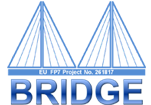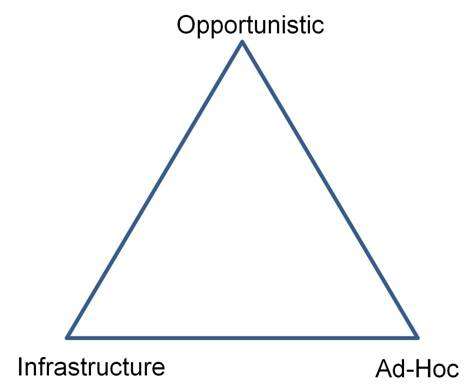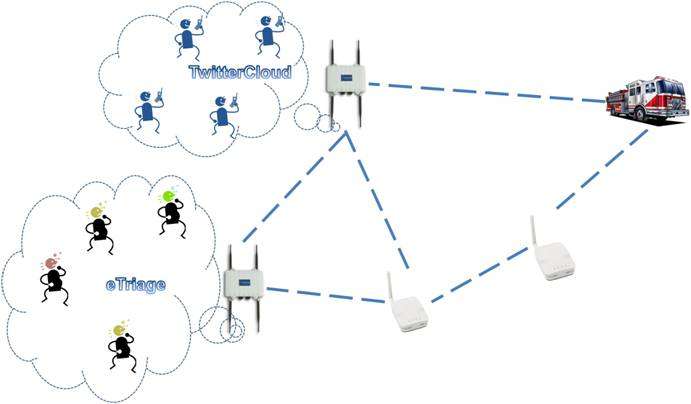MESH: Deployable Ad-hoc Back-up Network for Emergencies
Motivation
In an emergency situation the first network to become unavailable are cellular networks. Although emergency forces have priority to use this form of communication, the access may still be limited and victims at the emergency area have no possibility to send their help requests. BRIDGE MESH will provide the possibility to communicate with devices in an emergency area over different exploitable channels.
When talking about exploitable channels we have to distinguish between three different kinds of network:
1. At a disaster site arriving forces may deploy AD-HOC devices. These devices are designed to adapt to the dynamic nature of the network and to support emergency forces and victims. Example of such systems are Wi-Fi access points installed on top of fire trucks.
2. In today’s digital world devices with wireless interfaces are found everywhere. These resources can be used OPPORTUNISTICALLY to extend the services of the network. For example smart phones can be used as repeaters of packets or building control systems’ sensors can be queried for context information.
3. There are networks, which are pre-installed for an area. We call this kind of networks INFRASTRUCTURE. It obviously includes the cellular network but there are also other networks installed for special environments.
Vision
BRIDGE MESH will provide the possibility to communicate with devices in the emergency area. This is achieved through interwork of deployed and already available infrastructure into a uniform system.
A general addressing scheme and interface will make it invisible for victims and emergency personal how messages are transported and the users will have the feeling of having direct connection with the Command Centre and Incident Command. Bridge MESH is going to prioritize based on available bandwidth and importance of information what should and can be transported ensuring that network is not overloaded.
Technology
BRIDGE MESH is based on deployed MESH bridges, which have multiple network interfaces beside a 802.11 interface. The MESH bridges create an ad-hoc Wi-Fi network, where data is forwarded over multiple hops. MESH bridges accept local networks, aka local clouds, to attach to them (e.g., ZigBee networks, Bluetooth piconets, TwitterCloud, etc.) and use the Bridge MESH to forward data from the attached network to the Incident Centre.
NEXT STEPS
BRIDGE MESH has to by highly adoptable and reliable, e.g., based on the state of the network, origin and size of data the MESH bridges will decide whether they forward the data or withhold it to avoid overloads. As the Bridge MESH expands and more resources are connected the bandwidth is able to scale.
Also due to a general routing protocol opportunistic routes will be discovered and used to balance network load.





